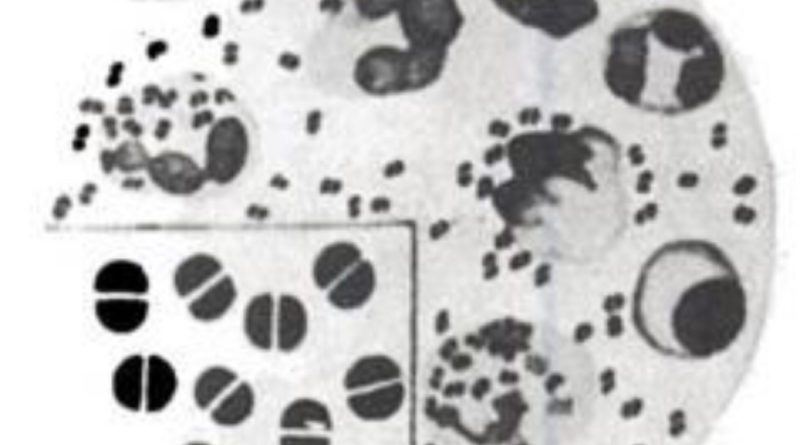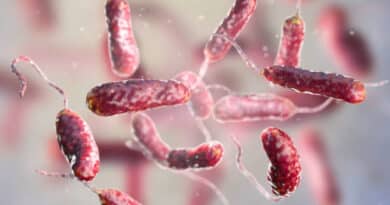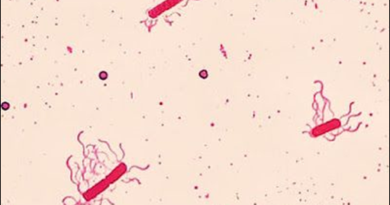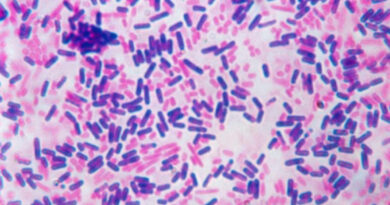Neisseria meningitides
The genus Neisseria consists of Gram negative, aerobic non sporulation, nonmotile, oxidase positive cocci typically arranged in pairs (diplococci).
Neisseria meningitides
Meningococcus was first described and isolated by Weichselbaum from the spinal fluid of a patient.
N. meningitides causes meningococcal meningitis (formerly also called as cerebrospinal fever)
Morphology
Meningococcal are Gram negative oval or spherical cocci 0.6 – 0.8 micrometer in size, typically arranged in pairs, with the adjacent sides flattened. Considerable variations occur in size, shape and staining properties, specially in older culture due to autolysis. In smears from lesions, the cocci are more regular and generally intracellular. They are nonmotile. Most fresh isolates are capsulated.
Cultural Characteristics
Because of its specific growth requirement, it does not grow on ordinary media. Growth occurs on media enriched with blood, serum or ascetic fluid, which promote growth by neutralizing certain inhibiting substances in culture media rather than by providing additional nutritional needs.
They are strictly aerobes, and no growth occurs anaerobically. The optimum temperature for growth is 35 – 36 C. no growth occurs below 30 C. optimum pH is 7.4 – 7.6. growth is facilitated by 5 – 10 % CO2 and high humidity.
On solid media, after incubation for 24 h, the colonies are small (about 1 mm in diameter), translucent, round, convex, bluish grey, with a smooth glistening surface and with entire edges. The colonies are typically lenticular in shape, butyrous in consistency and easily emulsifiable. Weak hemolysis occurs on blood agar. Smooth and rough types of colonies are found. Growth is poor in liquid media, producing a granular turbidity with little or no surface growth.
Media commonly used for culturing meningococci are, blood agar, chocolate agar and mueller – hinton starch casein hydrolysate agar. Modified Thayer – Martin (with vancomycin, coli stain and nystatin) is a useful selective media.
Biochemical Reactions
Neisseria are catalase and oxidase positive. The prompt oxidase reaction helps the identification of neisseria (both meningococcus and gonococcus) in mixed culture.
When freshly prepared 1% solution of oxidase reagent (tetramethyl paraphenylene diamine hydrochloride) is poured on the culture media, the neisseria colonies turn deep purple. Subculture should be made immediately, as the organism dies on prolonged exposure to the reagent. This test may also be performed by rubbing a little of the growth with a loop on a strip of filter paper moistened with the oxidase reagent (kovac’s method). A deep purple color appears immediately.
Indole and hydrogen sulphide are not produced and nitrates are not reduced. Glucose and maltose are utilized, but not sucrose or lactose, producing acid but no gas (gonococci acidify glucose but not maltose).
Resistance
Meningococci are very delicate organisms, being highly susceptible to heat, desiccation, alteration in pH and to disinfectants. They are sensitive to penicillin and other antibiotics, but resistant strains have emerged and become common in many areas.
Pathogenicity
Cerebrospinal meningitis and meningococcal septicemia are the two main types of meningococcal disease. Meningococci are strict human parasites inhabiting the nasopharynx. Infection is usually asymptomatic. In some, local inflammation ensues, with rhinitis and pharyngitis. Dissemination occurs only in a small proportion.
Meningococcemia presents as acute fever with chills, malaise and prostration. Typically a petechial rash occurs early in the disease. Meningococci may be isolated from the petechial lesions. Metastatic involvement of the joints, ears, eyes, lungs and adrenals may occur. About 10% develop pneumonia.
Treatment
Prompt treatment is essential to ensure recovery without sequelae. Sulphonamides, once the mainstay, are not used due to widespread resistance. Intravenous penicillin G is the treatment of choice. Chloramphenicol is equally effective. One of the later cephalosporins may be used for the initiation of treatment before the etiology of meningitis is known.
Reference
Text Book Of Microbiology



